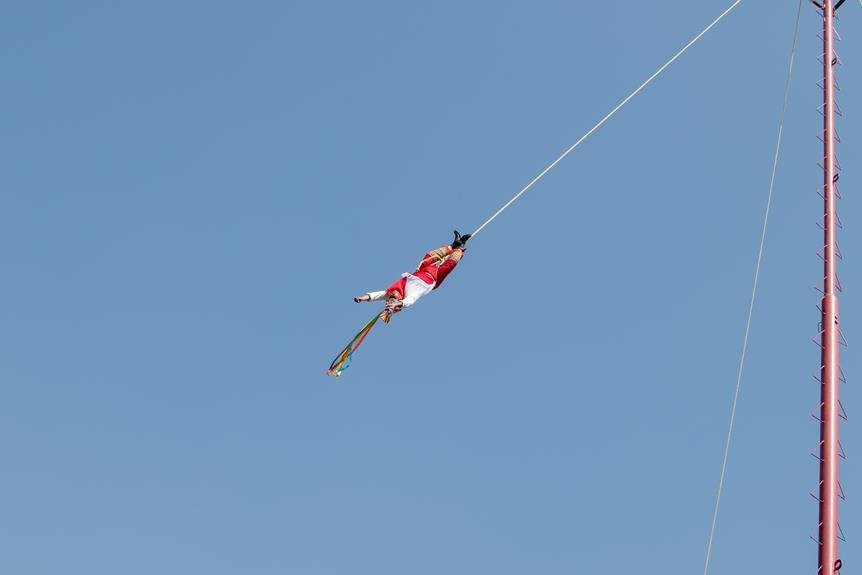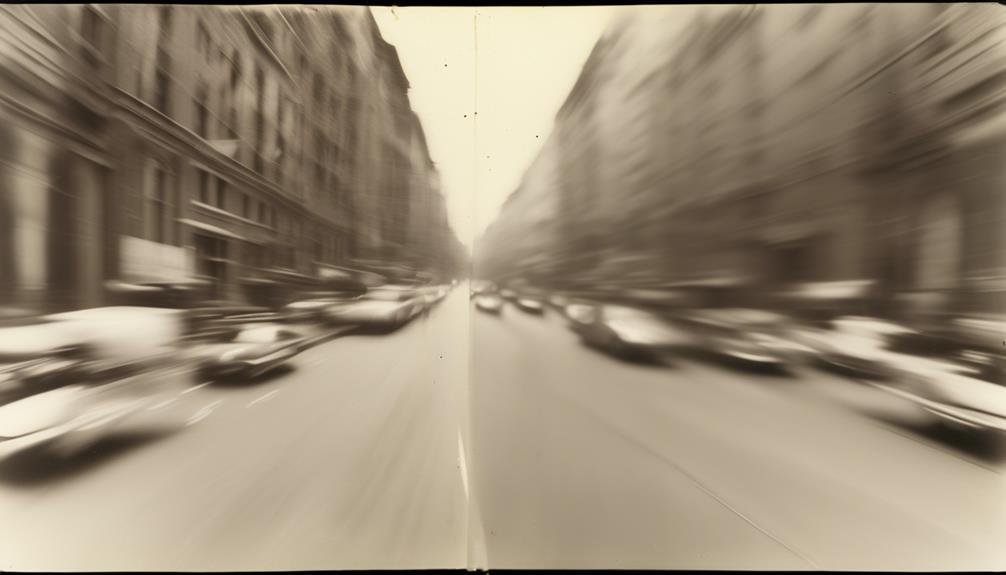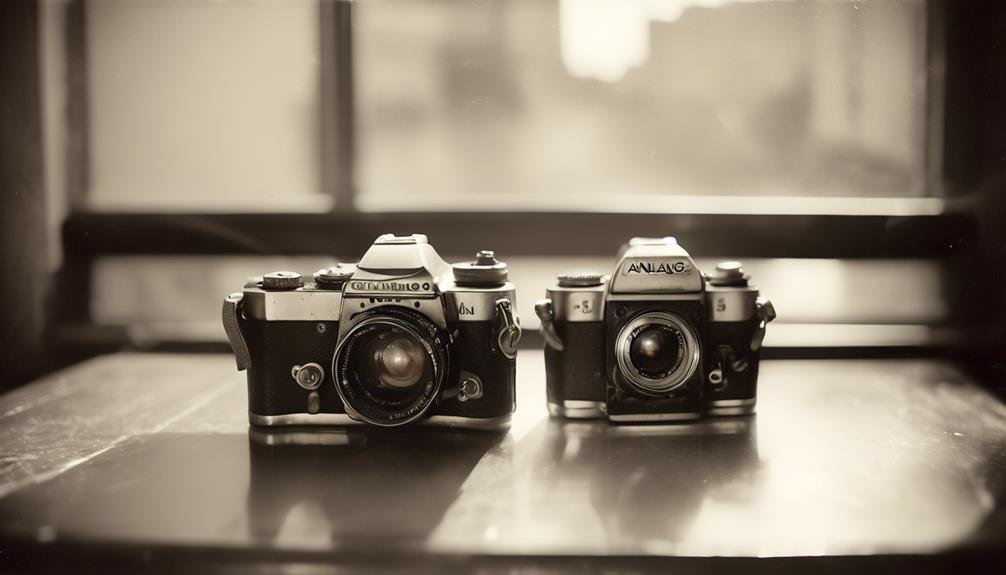
When it comes to capturing moments in a fraction of a second, every millisecond counts. We've all been there—trying to snap that perfect shot only to have the subject move slightly out of focus at the crucial moment. But fear not, because in the world of photography, the battle between DSLR and mirrorless cameras for autofocus speed supremacy is on. The question of which one comes out on top is not just a matter of speed, but also accuracy and adaptability. So, which system will reign supreme in the autofocus face-off? Let's dive in and find out.
Autofocus Speed: DSLR Vs Mirrorless
In our comparative analysis of autofocus speed between DSLR and mirrorless cameras, we observed distinct differences in performance that impact the overall shooting experience. The technology advancements in autofocus systems have driven significant changes in the photography industry, leading to a shift in the way photographers approach capturing moments. DSLRs, known for their phase detection autofocus, have long been the preferred choice for professional photographers due to their superior autofocus speed. However, with future developments in mirrorless cameras, the gap is rapidly narrowing. Mirrorless cameras, leveraging contrast-detection autofocus, are catching up and even surpassing DSLRs in some cases, thanks to technological innovations and advancements in sensor and processor capabilities. These advancements are reshaping the photography industry, offering photographers new tools to enhance their craft. As the competition intensifies, we can expect further advancements in autofocus speed and accuracy in both DSLR and mirrorless cameras, ultimately benefiting photographers and pushing the boundaries of what's achievable in the world of photography.
Performance Comparison: Mirrorless Vs DSLR
Advancements in technology have propelled a performance comparison between mirrorless and DSLR cameras, revealing intriguing insights into their respective capabilities. When comparing tracking performance, mirrorless cameras have shown remarkable agility and accuracy, thanks to advanced on-sensor phase detection and contrast-detection autofocus systems. This allows for precise subject tracking, especially in fast-paced environments such as sports or wildlife photography. Additionally, mirrorless cameras excel in low light performance due to their electronic viewfinders, which offer a real-time preview of the final image, allowing for accurate exposure and focus even in challenging lighting conditions. This is further enhanced by their ability to utilize a larger number of focus points across the sensor, ensuring improved low light focusing capabilities. Furthermore, the absence of a moving mirror in mirrorless cameras eliminates vibrations, contributing to sharper images in low light situations. Overall, the performance comparison between mirrorless and DSLR cameras showcases the innovative capabilities of mirrorless technology, particularly in tracking performance and low light conditions.
Speed and Accuracy: Mirrorless Autofocus Vs DSLR

The comparison of tracking performance between mirrorless and DSLR cameras has revealed intriguing insights, and now we turn our focus to the crucial aspect of autofocus speed and accuracy in the context of mirrorless technology versus DSLR. Mirrorless cameras have gained an edge in autofocus speed due to their advanced on-sensor phase detection and contrast-detection systems. These systems allow for swift and precise autofocus, especially beneficial in fast-paced shooting scenarios. Additionally, mirrorless cameras often boast a larger number of focus points spread across a wider area of the frame, enhancing the overall accuracy and speed of autofocus.
On the other hand, DSLRs, while still capable of delivering excellent autofocus performance, may face limitations in speed and accuracy when compared to their mirrorless counterparts. The traditional phase detection autofocus in DSLRs relies on a separate autofocus module, which can lead to limitations in coverage and accuracy, particularly in challenging lighting conditions. Furthermore, the inherent design of DSLRs with a moving mirror introduces additional complexities and potential points of failure.
As mirrorless technology continues to evolve, these advantages are likely to become even more pronounced, setting a new standard for autofocus performance in the digital imaging industry.
Autofocus Face-Off: Mirrorless Vs DSLR
Through rigorous testing and analysis, we can compare the autofocus performance of mirrorless and DSLR cameras to determine which technology offers superior precision and speed. When it comes to the autofocus face-off between mirrorless and DSLR cameras, several key advantages of mirrorless technology and limitations of DSLRs stand out:
- Mirrorless Advantages
- Enhanced Speed: Mirrorless cameras often employ on-sensor phase-detection autofocus, enabling swift and accurate focusing, especially during continuous shooting and video recording.
- Eye and Face Detection: Many mirrorless cameras boast advanced eye and face detection features, allowing for precise and reliable focus tracking on human subjects, making them ideal for portrait and street photography.
- Real-time Feedback: Mirrorless cameras provide real-time exposure and depth of field feedback through the electronic viewfinder, giving photographers a clear understanding of the final image before pressing the shutter button.
These advantages highlight the innovative capabilities of mirrorless autofocus systems, showcasing their potential to outperform traditional DSLR autofocus technology. Meanwhile, DSLR limitations, such as reliance on a separate phase-detection module and lack of real-time feedback through the optical viewfinder, underscore the need for continual advancement in autofocus technology.
Focus Speed Showdown: Mirrorless Vs DSLR

When comparing the focus speed of mirrorless and DSLR cameras, it becomes evident that the technology employed significantly impacts the efficiency and accuracy of autofocus performance. Mirrorless cameras have distinct advantages in focus speed due to their advanced autofocus systems, which rely on on-sensor phase detection and contrast detection. On the other hand, DSLRs, with their traditional phase detection autofocus systems, may lag behind in terms of focus speed, especially in continuous autofocus and tracking moving subjects.
| Aspect | Mirrorless Advantages | DSLR Disadvantages |
|---|---|---|
| Autofocus Speed | Utilizes on-sensor phase detection and contrast detection | Relies on traditional phase detection autofocus systems |
| Continuous Autofocus | Enhanced performance in continuous autofocus and subject tracking | May experience slower focus speed in continuous autofocus |
| Compactness | Smaller and lighter bodies due to the absence of a mirror system | Bulkier due to the presence of a mirror and optical viewfinder |
Frequently Asked Questions
Can DSLR and Mirrorless Cameras Both Use the Same Autofocus Lenses?
Yes, both DSLR and mirrorless cameras can use the same autofocus lenses. When comparing autofocus speed, it's essential to consider the specific camera model and lens used, as advancements continually improve performance.
How Do DSLR and Mirrorless Cameras Differ in Terms of Autofocus Tracking for Moving Subjects?
In terms of autofocus tracking for moving subjects, DSLR and Mirrorless cameras differ in their autofocus speed. While DSLRs traditionally excel in this area, Mirrorless cameras are rapidly closing the gap through innovative technology and shooting scenarios.
Are There Any Specific Shooting Scenarios Where Mirrorless Autofocus Outperforms DSLR Autofocus?
In low light, wildlife, and sports photography, mirrorless autofocus excels due to advanced technology. Landscape, portrait, street, and wedding photography also benefit from mirrorless autofocus precision, speed, and silent operation, enhancing overall shooting experience.
Can Autofocus Speed Be Affected by the Size and Weight of the Camera Body?
Surprisingly, the size and weight of a camera body can indeed affect autofocus speed. With advancements in autofocus technology, lighter and more compact mirrorless cameras are now rivaling DSLRs in autofocus performance.
What Advancements in Autofocus Technology Can We Expect to See in the Near Future for Both DSLR and Mirrorless Cameras?
Advancements in autofocus technology are shaping the future of both DSLR and mirrorless cameras. The compatibility, tracking, and performance of autofocus systems are expected to improve. These developments will enhance overall photography experiences.
